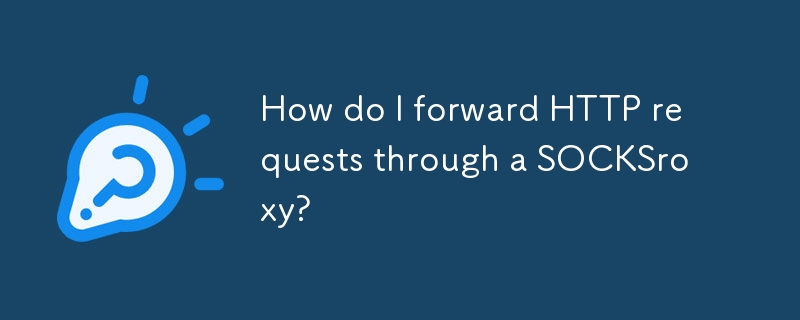

SOCKS5 proxy provides flexibility, allowing users to access any online destination without facing verification codes or IP bans, thereby enhancing the anonymity and security of network activities. SOCKS5 proxy is suitable for a variety of scenarios, such as data collection, web crawlers, remote access, game acceleration, etc., and can meet the needs of different users.
Using Python to send HTTP requests through SOCKS5 proxy, you can use the PySocks library.
Here are the specific steps and sample code:
1. Install the PySocks library
Use pip to install the command:
pip install PySocks
2. Configure SOCKS5 proxy
Set the proxy server address and port
3. Send HTTP requests
Use the requests library to send requests, and forward through the SOCKS5 proxy
Sample code:
import socks import socket import requests socks.set_default_proxy(socks.SOCKS5, "IP address", Port) socket.socket = socks.socksocket response = requests.get("http://example.com") print(response.text)
Just replace "IP Address" and Port with your actual proxy server address and port number.
The validity of SOCKS5 proxy can be verified from the following aspects:
1. Connection test:
Use telnet or other tools to try to connect to the Socks5 port of the proxy IP to check whether the connection is successful.
2. Speed test:
Use online tools or command line tools to perform ping tests or download speed tests to evaluate the performance of the proxy.
3. Protocol support test:
Send requests for specific protocols to test whether the proxy supports the required protocols, such as HTTP, HTTPS, etc.
4. IP geolocation verification:
Use online IP geolocation query tools to verify whether the geographic location of the proxy IP is consistent with the actual one.
5. Use third-party proxy detection tools:
Use third-party tools to perform comprehensive proxy detection.
Bypass restrictions: In some network environments, direct access to specific websites or services may be restricted by firewalls or network policies. SOCKS5 proxy can help users bypass these restrictions and access blocked content.
Enhance privacy protection: SOCKS5 proxy can hide the user's real IP address, improve network privacy and security. This is especially important for users who need to protect their identity.
Support multiple protocols: SOCKS5 proxy is not limited to HTTP protocol, it supports multiple protocols such as TCP and UDP, so it can handle multiple network requests including HTTP, providing greater flexibility and versatility.
Increase access speed: In some cases, accessing specific resources through SOCKS5 proxy may be faster than direct access, especially when the network connection quality between the proxy server and the target server is good.
SOCKS5 proxy is widely used in many fields due to its high efficiency and security. The following are several typical use cases:
Web crawler: By rotating IP, the crawler IP is prevented from being blocked, and the efficiency and success rate of data collection are improved. At the same time, its anonymity reduces the risk of crawlers being restricted.
Network testing: Engineers use SOCKS5 proxies to simulate global network environments, detect differences in network performance in different geographical locations, and optimize network architecture.
Game acceleration: By providing high-speed and stable proxy servers, network latency is reduced and the gaming experience is improved, which is especially important for competitive game players.
Remote office: Provide a stable and secure network connection to ensure the smooth progress of remote office, while protecting user privacy and data security.
In summary, SOCKS5 proxy forwarding HTTP requests can meet users' needs such as bypassing network restrictions, enhancing privacy protection, supporting multiple protocols, and increasing access speed.
HTTP requests are forwarded through SOCKS5 proxy to ensure the anonymity and security of network communications. However, it should be noted that you must first choose a stable and fast proxy service to ensure stable forwarding of HTTP requests.
The above is the detailed content of How do I forward HTTP requests through a SOCKSroxy?. For more information, please follow other related articles on the PHP Chinese website!




